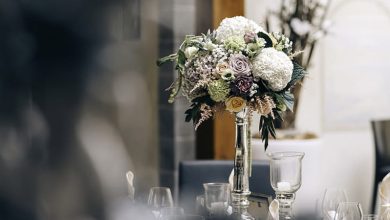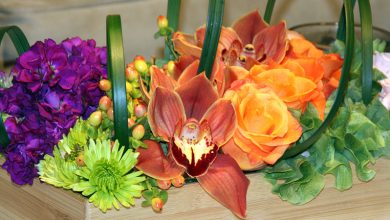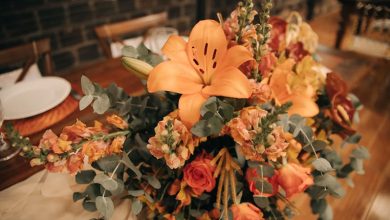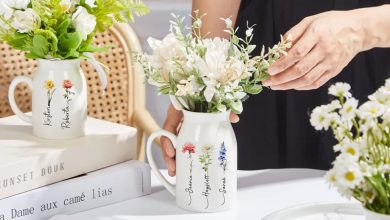How to Make Hanging Flower Baskets?

Hanging flower baskets add a touch of natural beauty to any space, whether it’s a porch, balcony, or garden. They are not only visually appealing but also easy to create with the right materials and a bit of creativity. In this guide, we will walk you through the steps of how to make hanging flower baskets, from choosing the right plants to maintaining them throughout the season.
Choosing Your Plants
Choosing the right plants is a crucial step in how to make hanging flower baskets. The plants you select will determine the overall look and success of your basket, so it’s essential to consider factors like sunlight, climate, and growth habits.
Whether you’re aiming for a vibrant burst of color or a lush cascade of greenery, here’s how to choose the perfect plants:
- Sunlight Requirements: Assess the amount of sunlight your hanging basket will receive. Is it in full sun, partial shade, or full shade? This will guide your plant selection to ensure they thrive in their environment.
- Climate Considerations: Consider your local climate and seasonal weather patterns. Choose plants that are suitable for your region and can withstand the temperature fluctuations throughout the year.
- Growth Habit: Think about how each plant will grow and fill out the basket over time. Taller plants like geraniums or petunias can serve as focal points in the center, while trailing plants such as bacopa or lobelia will spill over the edges, creating a cascading effect.
- Color Palette: Decide on a color scheme that complements your outdoor space or personal preferences. You can go for bold and vibrant hues for a striking display or opt for softer tones for a more subtle elegance.
- Maintenance Level: Consider the maintenance requirements of each plant. Some may need more frequent watering or deadheading to keep them looking their best throughout the season.
When selecting plants for your hanging flower baskets, aim for a mix of thrillers, fillers, and spillers. Thrillers are the focal point plants that add height and interest, fillers bulk out the basket and provide density, while spillers cascade over the edges, softening the basket’s appearance and adding a trailing effect.
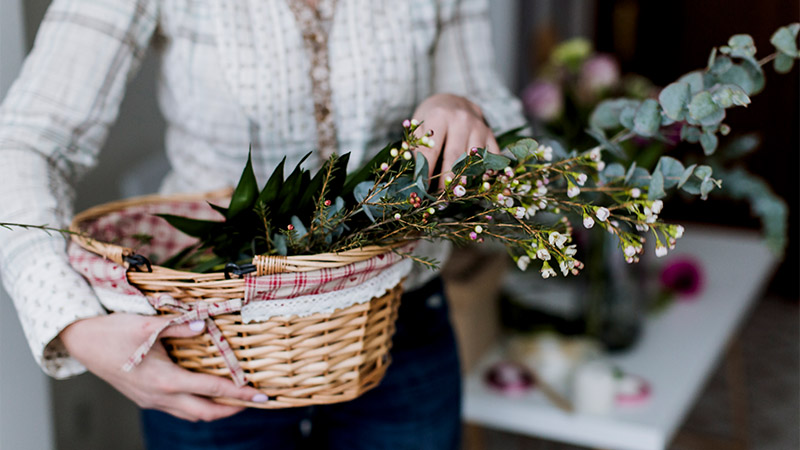
Remember, the key to successful hanging flower baskets is to choose plants that not only look good together but also thrive in the conditions you can provide. By carefully selecting plants based on sunlight, climate, growth habits, and color preferences, you can create stunning hanging baskets that will be the envy of your neighborhood.
Read More: How to Hang Flower Baskets: A Step-by-Step Guide
Experiment with different combinations and don’t be afraid to get creative with your designs. With a bit of planning and attention to detail, you’ll soon be enjoying a beautiful display of flowers right outside your door. Happy gardening!
Materials Needed
Gathering the right materials is essential for successfully creating hanging flower baskets. Each component plays a crucial role in ensuring your plants thrive and your baskets look beautiful. Before you begin assembling your baskets, it’s important to have everything on hand.
Here’s a rundown of the materials you’ll need and why they’re important in how to make hanging flower baskets:
- Hanging Baskets: These containers are specifically designed for hanging and displaying plants. They come in various sizes and materials, such as plastic, metal, or woven materials like wicker. Choose a size that accommodates the number of plants you plan to include and fits the space where you intend to hang the basket.
- Liners: Coco fiber liners are made from coconut husks and are known for their moisture retention properties. They provide a natural look and feel to your hanging baskets while helping to maintain adequate soil moisture. Sphagnum moss liners, on the other hand, offer excellent aeration and drainage for roots, ensuring healthy plant growth.
- Potting Mix: Unlike garden soil, potting mix is specifically formulated for container plants. It is lightweight and provides good drainage, which is essential for preventing waterlogged roots. Choose a potting mix that suits the needs of your plants—some are formulated for specific types of plants, such as cacti or orchids.
- Plants: The selection of plants is crucial in how to make hanging flower baskets. Consider the sunlight conditions of the location where you plan to hang the baskets—whether it’s full sun, partial shade, or full shade. Choose plants that thrive in those conditions to ensure they grow and bloom vigorously throughout the season.
- Fertilizer: While plants derive nutrients from the potting mix, fertilizers provide additional nutrients that may be lacking in the soil. Slow-release fertilizers gradually release nutrients over time, promoting steady growth and flowering. Liquid fertilizers can be applied directly to the soil or foliage, providing an immediate nutrient boost to plants.
- Watering Can or Hose: Consistent watering is essential for the health and vigor of plants in hanging flower baskets. Use a watering can with a fine rose or a hose with a gentle spray attachment to water your baskets thoroughly. Watering needs may vary depending on weather conditions, so monitor the soil moisture regularly.

By gathering these materials and understanding their roles in how to make hanging flower baskets, you set yourself up for success in creating beautiful and thriving displays of plants.
With careful planning and attention to detail, you’ll soon enjoy the sight of colorful blooms cascading from your hanging baskets, enhancing your outdoor living spaces with natural beauty. Happy gardening!
Read More: The Best Hanging Flower Basket Ideas
Assembling Your Hanging Flower Basket
Assembling your hanging flower basket is where creativity meets practicality. This step in how to make hanging flower baskets allows you to bring together your chosen plants and materials into a cohesive and visually appealing display.
Proper assembly ensures that your plants have the best environment to grow and thrive throughout the season. Here’s a detailed guide on how to assemble your hanging flower basket:
Step 1: Prepare the Basket and Liner
Preparing the basket and liner sets the foundation for your hanging flower basket. This step ensures proper drainage and moisture retention for your plants. Follow these steps:
- Choose a Suitable Basket: Select a hanging basket that suits your style and the plants you’ve chosen. Baskets come in various sizes and materials, such as plastic, wire, or woven materials like wicker. Ensure the basket has sufficient drainage holes at the bottom to allow excess water to escape.
- Line the Basket: Line the inside of the basket with a liner to hold the potting mix and plants in place. Coco fiber liners are popular for their moisture retention properties and provide a natural look. Alternatively, sphagnum moss liners offer excellent aeration and drainage. Cut the liner to fit snugly inside the basket, leaving a small overlap at the top.
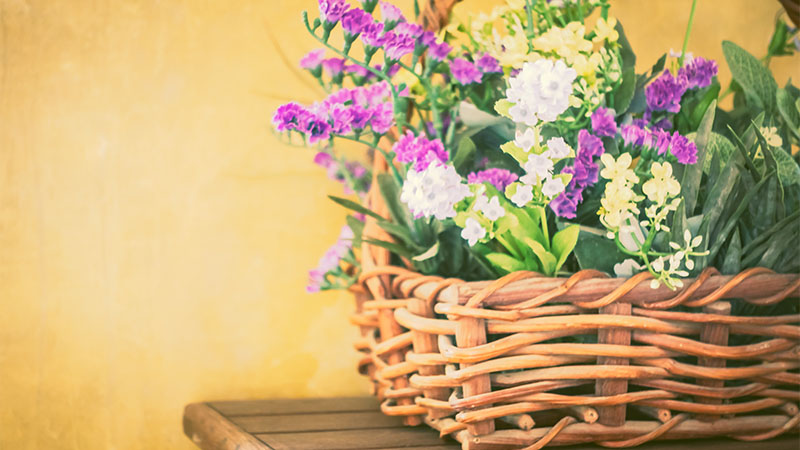
Step 2: Add Potting Mix
Choosing the right potting mix is crucial in how to make hanging flower baskets. Potting mix provides essential nutrients and aeration for your plants’ roots. Here’s how to proceed:
- Fill the Basket: Fill the lined basket with potting mix, leaving enough space at the top to accommodate the plants. Use a high-quality potting mix that is lightweight, well-draining, and specifically formulated for container plants. Avoid using garden soil, as it may compact and restrict root growth.
- Level the Surface: Gently firm the potting mix in the basket to create a level surface. Ensure there are no air pockets around the edges or at the bottom of the basket.
Step 3: Arrange Your Plants
Arranging your plants strategically ensures a balanced and attractive hanging flower basket. Consider the growth habits and sunlight requirements of each plant. Follow these guidelines:
- Choose Thrillers, Fillers, and Spillers: Select a combination of thrillers (tall focal point plants), fillers (plants that provide bulk and density), and spillers (plants that cascade over the edges). Place thrillers towards the center or back of the basket, fillers around them, and spillers near the edges to create a cascading effect.
- Positioning: Place taller plants, such as geraniums or petunias, in the center of the basket to add height. Surround them with fillers like begonias or lobelia to create a lush and full appearance. Finally, plant spillers such as trailing lobelia or ivy around the edges to cascade down attractively.

Step 4: Plant Your Flowers
Planting your flowers correctly ensures they establish well and thrive in your hanging flower basket. Follow these steps:
- Prepare Plants: Remove each plant from its nursery pot and gently loosen the roots. This encourages them to spread out into the surrounding potting mix once planted.
- Planting Depth: Dig a hole in the potting mix that is slightly larger than the root ball of each plant. Place the plant in the hole and backfill with potting mix, pressing gently around the base of the plant to secure it in place.
- Space Plants Appropriately: Ensure plants are spaced evenly throughout the basket to allow room for growth. Avoid overcrowding, as this can lead to competition for nutrients and water.
Step 5: Water and Fertilize
Watering and fertilizing your hanging flower basket are essential for the ongoing health and vigor of your plants. Follow these guidelines:
- Initial Watering: After planting, water the basket thoroughly to settle the potting mix and hydrate the plants. Ensure water penetrates evenly throughout the basket until it starts to drain from the bottom.
- Regular Watering: Check the soil moisture daily, especially during hot weather. Water when the top inch of soil feels dry to the touch. Adjust watering frequency based on weather conditions to prevent plants from drying out.
- Fertilizing: Apply a balanced fertilizer according to the package instructions to provide essential nutrients for healthy growth and flowering. Choose a fertilizer formulation suitable for flowering plants and apply it regularly throughout the growing season.
Last Step: Tips for Successful Assembly
Assembling your hanging flower basket can be a rewarding experience, especially when done with attention to detail and care. Here are some additional tips to ensure success:
- Choose Healthy Plants: Select plants that are free from pests and diseases, with vigorous growth and good foliage color.
- Consider Seasonal Varieties: Choose plants that will bloom throughout the season to maintain color and interest in your hanging basket.
- Monitor Growth: Regularly check the growth of your plants and adjust watering, pruning, and fertilizing as needed to promote healthy growth.
- Rotate the Basket: Rotate your hanging basket occasionally to ensure all sides receive adequate sunlight, promoting even growth and flowering.
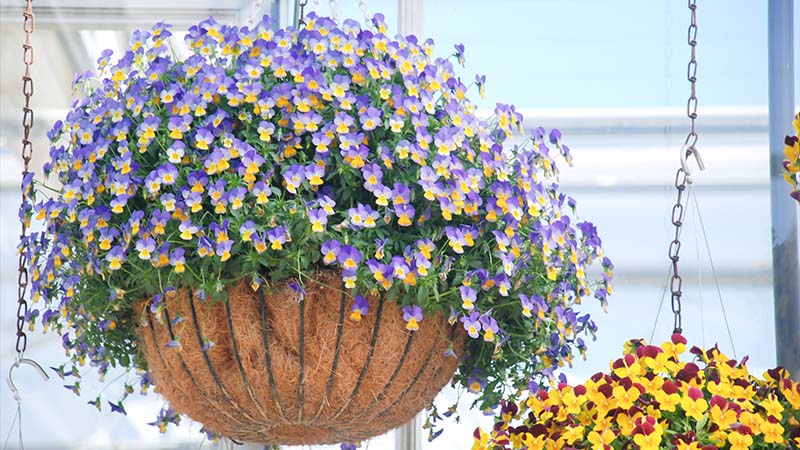
By following these steps and tips on how to make hanging flower baskets, you can create stunning displays that enhance your outdoor living spaces with color and beauty.
With careful planning and maintenance, your hanging flower baskets will thrive and provide enjoyment throughout the growing season. Enjoy your gardening journey and the beauty of your blooming creations!
Maintenance Tips
Once you’ve created your hanging flower baskets, proper maintenance is key to keeping them healthy and vibrant throughout the growing season. Regular care ensures that your plants continue to bloom and thrive, enhancing the beauty of your outdoor spaces.
Here are some essential maintenance tips on how to make hanging flower baskets:
- Watering: Proper watering is crucial for the health of your hanging flower baskets. Check the soil moisture regularly, especially during hot weather, and water thoroughly when the top inch of soil feels dry. Avoid letting the soil dry out completely, as this can stress the plants.
- Deadheading: Remove faded or spent flowers regularly to encourage continuous blooming. This not only keeps your baskets looking tidy but also redirects the plant’s energy into producing new flowers rather than setting seeds.
- Fertilizing: Feed your hanging flower baskets with a balanced fertilizer to ensure they receive essential nutrients for growth and flowering. Follow the manufacturer’s instructions for application rates and frequency to avoid over-fertilizing, which can harm plants.
- Pruning: Trim back any leggy or overgrown growth to promote bushier and healthier plants. Pinch back the tips of trailing plants to encourage branching and more compact growth, which will enhance the fullness of your baskets.
- Pest and Disease Control: Monitor your plants regularly for signs of pests like aphids or diseases such as powdery mildew. If detected early, these issues can often be addressed with organic remedies or by removing affected plant parts.

By incorporating these maintenance tips into your routine on how to make hanging flower baskets, you can ensure that your creations thrive and continue to brighten your outdoor spaces with their beauty.
With a little care and attention, you’ll enjoy a season-long display of flourishing blooms that enhance your gardening efforts and bring joy to those who see them. Happy gardening!
Conclusion
Now that you know how to make hanging flower baskets, you can enjoy creating these beautiful displays to brighten up your outdoor living spaces. With the right plants, materials, and care, your hanging baskets will thrive and bring joy throughout the growing season.
Experiment with different plant combinations and basket styles to create unique and personalized arrangements that reflect your gardening style and creativity. Happy gardening!


